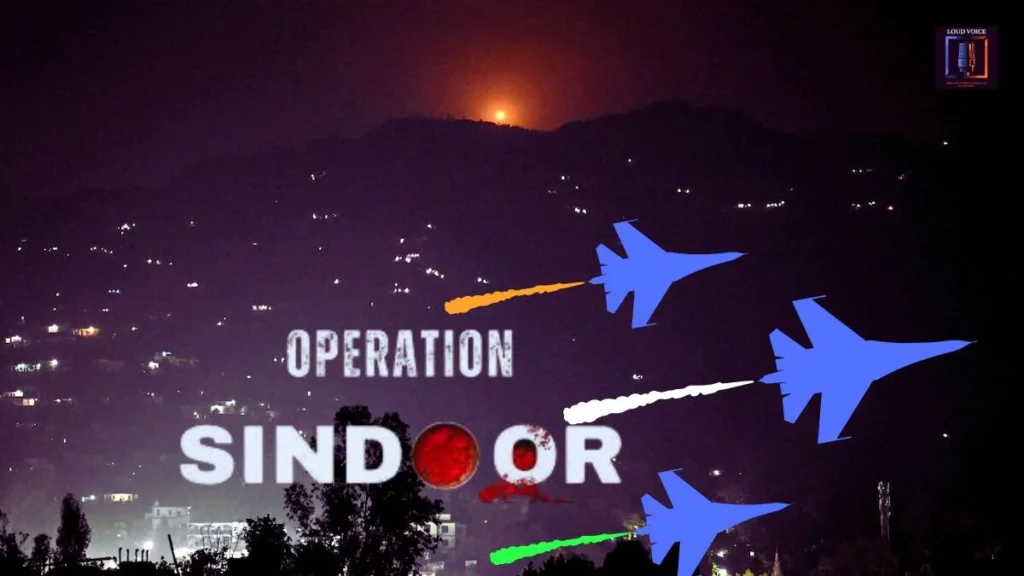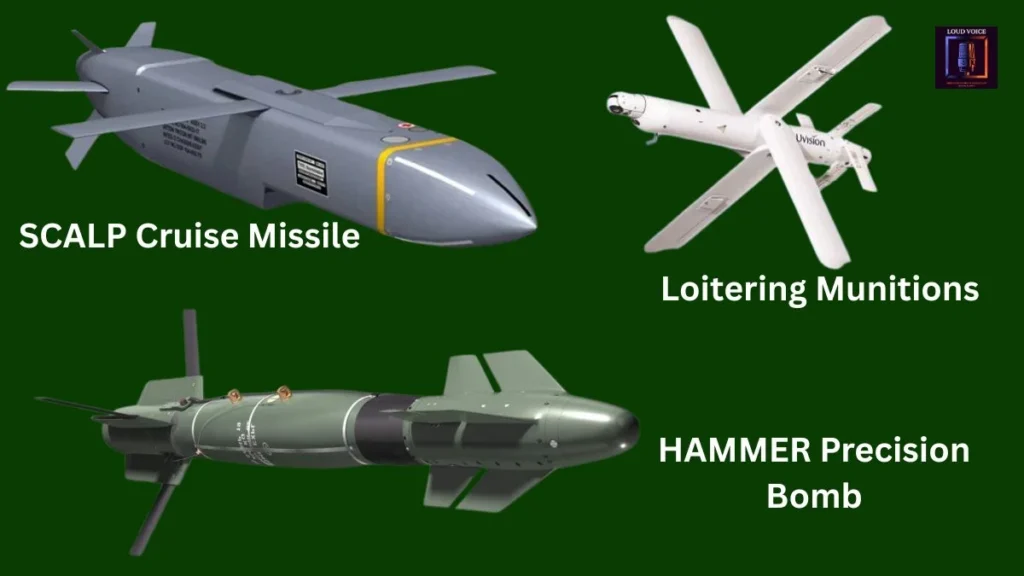Key Takeaways
- Operation Sindoor was a decisive Indian military operation targeting nine terrorist bases in Pakistan and Pakistan-occupied Kashmir, executed on May 7, 2025, in response to the Pahalgam terror attack.
- The tri-services operation, involving the Indian Army, Navy, and Air Force, used advanced precision munitions like SCALP missiles and HAMMER bombs to destroy terror infrastructure without targeting Pakistani military facilities.
- The strikes avenged the April 22, 2025, Pahalgam attack, which killed 26 civilians, and targeted key terror groups like Jaish-e-Mohammed (JeM) and Lashkar-e-Taiba (LeT).
- India briefed global leaders, emphasizing the operation’s non-escalatory nature, while Pakistan retaliated with mortar shelling along the Line of Control, escalating tensions.
- World leaders, including the UN, US, and UAE, urged restraint to prevent a broader conflict between the nuclear-armed neighbors.
Operation Sindoor: A Bold Strike Against Terrorism
On the morning of May 7, 2025, the world woke to news of India’s audacious military operation, codenamed Operation Sindoor, targeting terrorist infrastructure deep inside Pakistan and Pakistan-occupied Kashmir (PoK). The meticulously planned strikes, executed by the Indian Army, Navy, and Air Force, sent a clear message: India would no longer tolerate cross-border terrorism. But what led to this high-stakes operation, and what does it mean for the volatile India-Pakistan relationship?
The spark was the horrific April 22, 2025, terror attack in Pahalgam, Jammu and Kashmir, where 26 civilians, including a serving Indian Navy officer and a Nepali national, lost their lives. The attack, linked to Pakistan-based terror groups like Lashkar-e-Taiba (LeT), reignited decades-old tensions. Operation Sindoor wasn’t just a retaliation—it was a strategic move to dismantle the roots of terrorism. Let’s dive into the details of this operation, its implications, and the global response.
What Was Operation Sindoor?

A Tri-Services Masterstroke
Operation Sindoor was a joint effort by India’s three military branches, showcasing unparalleled coordination. The operation targeted nine terrorist bases—four in mainland Pakistan and five in PoK—using cutting-edge precision munitions. In order to reduce the possibility of a wider war, the Indian Ministry of Defense stressed that the strikes were “focused, measured, and non-escalatory,” purposefully avoiding Pakistani military installations.
The operation’s success hinged on precise intelligence from Indian agencies, which pinpointed the exact coordinates of terror camps. Among the targets were the headquarters of Jaish-e-Mohammed (JeM) in Bahawalpur and LeT in Muridke, notorious for orchestrating attacks like the 2008 Mumbai siege and the 2019 Pulwama bombing.
Advanced Weaponry in Action
India deployed a suite of high-tech weapons, including:
- SCALP Cruise Missile: A long-range, air-launched missile with a range exceeding 250 kilometers, designed for deep strikes.
- HAMMER Precision Bomb: A smart bomb capable of hitting hardened bunkers and multi-story buildings, used to destroy fortified terror infrastructure.
- Loitering Munitions: Kamikaze drones that provided real-time surveillance and precision strikes, ensuring minimal collateral damage.

These weapons underscored India’s growing military sophistication, allowing it to strike with surgical accuracy while maintaining plausible deniability of escalation.
Why Did India Launch Operation Sindoor?
The Pahalgam Tragedy
The April 22 attack in Pahalgam’s Baisaran Valley was a gut punch to India. The massacre of 26 civilians, mostly tourists, was one of the deadliest in Kashmir since 2000. The National Investigation Agency (NIA) linked the attack to LeT, alleging operational support from Pakistan’s Inter-Services Intelligence (ISI). Interrogations revealed that attackers received instructions from Pakistani handlers, fueling India’s resolve to act.
By giving the military “complete operational freedom,” Prime Minister Narendra Modi demonstrated his zero-tolerance stance. The Indian Embassy in Washington stated, “India has credible leads, technical inputs, and survivor testimony pointing to Pakistan-based terrorists.” When Pakistan denied involvement and accused India of “false flag” operations, the stage was set for a military response.
A History of Tensions
India and Pakistan have a fraught history, marked by wars in 1947, 1965, 1971, and 1999, alongside frequent skirmishes along the Line of Control (LoC). The 2019 Balakot airstrike, following the Pulwama attack, set a precedent for India’s proactive stance against terrorism. Operation Sindoor, however, was more expansive, targeting multiple sites across Pakistan’s heartland, not just PoK.
Key Targets of Operation Sindoor
Terror Hubs in Pakistan
The operation struck four sites in mainland Pakistan:
- Markaz Subhan Allah, Bahawalpur (JeM): The ideological nerve center of JeM, where founder Masood Azhar has trained cadres since his 1999 release.
- Markaz Taiba, Muridke (LeT): A 200-acre compound used for indoctrination and logistics, led by Hafiz Saeed, mastermind of the Mumbai attacks.
- Mehmoona Joya, Sialkot (Hizbul Mujahideen): A training center for the declining but still active Hizbul Mujahideen.
- Sarjal, Tehra Kalan (JeM): A pre-infiltration camp for new recruits.
PoK: The Infiltration Corridor
Five sites in PoK were hit, including:
- Markaz Abbas, Kotli (JeM): A hub for suicide bomber training.
- Syedna Bilal and Shawai Nalla, Muzaffarabad (JeM and LeT): Infiltration points for sleeper cells.
- Markaz Ahle Hadith, Barnala (LeT): A logistics hub for regional operations.
These targets were chosen for their verified roles in cross-border terrorism, based on intelligence from detained operatives and surveillance data.
Pakistan’s Response: Escalation or Restraint?
Immediate Retaliation
Pakistan’s military claimed it shot down five Indian fighter jets and reported eight civilian deaths and 35 injuries from the strikes. Social media posts on X mentioned damage to a mosque in Muzaffarabad and shelling along the LoC, killing three civilians. Pakistan’s airspace was closed, and northern India suspended commercial flights, signaling heightened alertness.
The Pakistani army resorted to heavy mortar shelling in Poonch and Rajouri, targeting forward villages along the LoC. Pakistan’s Defense Minister Khawaja Asif called India’s actions “cowardly,” vowing retaliation.
A Weakened Military?
Reports suggest Pakistan’s military faces severe artillery shortages, with only four days of warfighting capability. The diversion of 155mm shells to Ukraine has reportedly left stockpiles low, raising questions about Pakistan’s ability to sustain a prolonged conflict. Former Pakistan Army Chief General Qamar Javed Bajwa once admitted that Pakistan lacks the economic strength for a long war with India.
Global Reactions: Calls for De-Escalation
United States: A Cautious Stance
US President Donald Trump referred to the situation as “a shame” and said he hoped it would be resolved quickly. Secretary of State Marco Rubio, briefed by India’s NSA Ajit Doval, said Washington would monitor the situation closely, urging a “peaceful resolution.” Vice President JD Vance voiced concerns about a “hot spot” between nuclear powers, emphasizing restraint.
United Nations: A Plea for Restraint
UN Secretary-General António Guterres expressed alarm, stating, “The world cannot afford a military confrontation between India and Pakistan.” He urged both nations to exercise “maximum military restraint.” The UN Security Council held closed-door consultations but issued no formal statement.
Allies and Neighbors
- Israel: Ambassador Reuven Azar supported India’s “right to self-defense,” condemning terrorism.
- UAE: Sheikh Abdullah bin Zayed Al Nahyan, the deputy prime minister, urged communication to prevent escalation.
- China: Beijing reaffirmed its support for Pakistan, with Ambassador Jiang Zaidong meeting President Asif Ali Zardari to discuss the crisis. China demanded that the Pahalgam incident be investigated in a “swift and fair manner.”
India’s Domestic Response: Unity and Preparedness
Opposition Rallies Behind Operation Sindoor: United in Support
Operation Sindoor ignited a powerful sense of unity across India’s political spectrum, with leaders from various parties rallying behind the armed forces. Launched on May 7, 2025, the operation was hailed as a decisive stand against terrorism, and prominent figures publicly expressed their unwavering support. This collective resolve highlighted the nation’s commitment to countering threats from groups like Jaish-e-Mohammed and Lashkar-e-Taiba.
Rahul Gandhi, the leader of the Congress, wrote on X, “Proud of our Armed Forces. Jai Hind!” His message celebrated the military’s courage in executing Operation Sindoor, resonating with millions. Similarly, Congress president Mallikarjun Kharge affirmed the party’s solidarity, stating, “We stand with the Armed Forces. Our leaders have shown the path in the past, and national interest remains supreme.” His words underscored a bipartisan commitment to national security.
Congress general secretary Jairam Ramesh further emphasized India’s resolute stance against terrorism originating in Pakistan and PoK. “From the night of the April 22 Pahalgam attack, we’ve made it clear that the government has our full support in responding to this tragedy,” Ramesh said, using the hashtag #OperationSindoor.
He emphasized that India’s resolve to eradicate the origins of terrorism must continue to be unwavering and rooted in the interests of the country.
In Tamil Nadu, Chief Minister MK Stalin voiced strong support, declaring, “Tamil Nadu stands with the Indian Army against terrorism.” He added, “With our Army, for our nation, Tamil Nadu stands resolute.” His statement reflected the widespread pride and solidarity sweeping the country. This unified front across political lines sent a clear message: in the face of terrorism, India stands as one.
Civil Defense Measures
The Union Home Secretary reviewed civil defense preparations, including mock drills with air-raid sirens and bunker cleaning. Over 200 cities conducted exercises to prepare civilians for potential hostile attacks, reflecting the gravity of the situation.
The Bigger Picture: Risks of Escalation
A Nuclear Shadow
There are concerns of a disastrous escalation because both India and Pakistan have nuclear weapons. According to a 2019 analysis, a terror strike might trigger a nuclear war in 2025 that would claim millions of lives. US professor John Mearsheimer warned, “There is real potential for a real war, and nuclear weapons might even be used.”
China’s Role
China, Pakistan’s close ally and India’s rival, looms large. Beijing’s vocal support for Islamabad, coupled with its military supplies, complicates the regional dynamic. While advising caution, the US is keeping a careful eye on China’s aviation capabilities.
What Happens Next?
The boundaries between India and Pakistan have been redrawn as a result of Operation Sindoor. India’s strikes were a calculated risk that struck a balance between the necessity of preventing full-scale conflict and the desire to punish terrorism. Pakistan appears to be balancing preserving its reputation with preventing escalation, as evidenced by its response, which included diplomatic complaints and retaliatory firing.
The international community’s calls for restraint highlight the global stakes. As Sushant Singh, a former Indian military officer, noted, “This is not just about Kashmir. This is mainland Pakistan. The next phase depends on Pakistan’s response.” If Pakistan escalates by targeting Indian states like Punjab or Rajasthan, the conflict could spiral. For now, both nations are on edge, with the world watching anxiously.
Conclusion
Operation Sindoor was more than a military operation—it was a statement of India’s resolve to protect its sovereignty and its people. In a region scarred by decades of conflict, the strikes remind us of the fragile balance between justice and catastrophe. As the dust settles, one question lingers: Can India and Pakistan step back from the brink, or are we witnessing the prelude to a larger storm? Only time will tell, but the hope for peace remains a beacon in these turbulent times.


